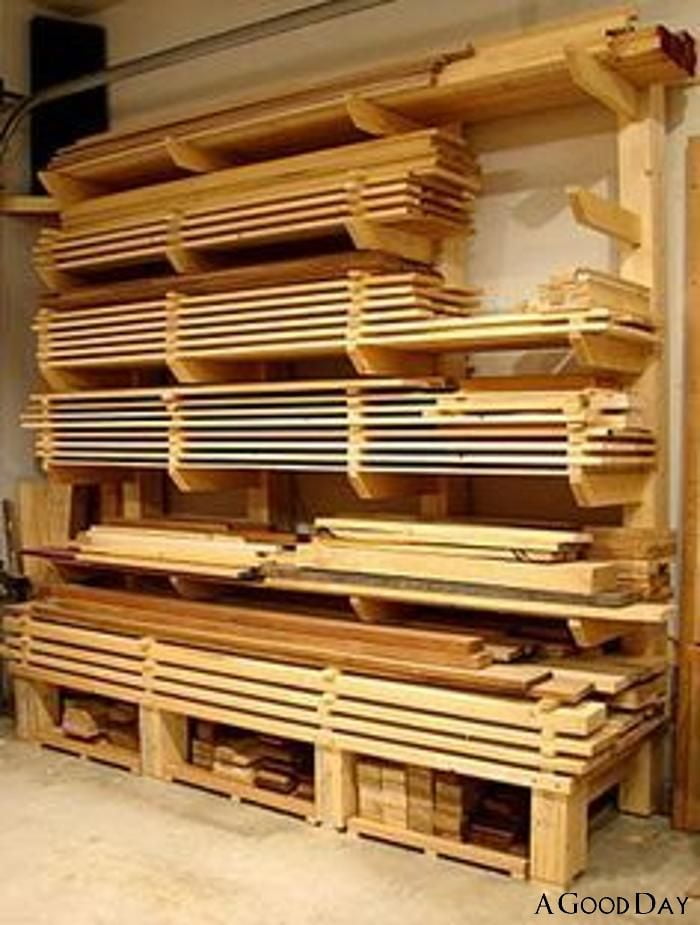Efficiently organizing a small woodworking shop is essential for maximizing productivity and maintaining a safe working environment. From optimizing the layout to implementing effective storage solutions, every aspect of organization plays a crucial role in enhancing the functionality of your workspace. This article will guide you through the process of setting up and organizing your small woodworking shop to ensure smooth operations and efficient workflow.
When it comes to organizing a small woodworking shop, one of the key factors to consider is space utilization. Assessing your available space and determining the layout and flow of your shop is crucial for creating a functional workspace that caters to your specific needs. By strategically placing workstations, tools, and storage units, you can optimize efficiency and streamline your woodworking processes.
In addition to layout planning, selecting the essential tools and equipment for your small woodworking shop is another important step in the organization process. Having the right tools on hand not only improves productivity but also contributes to a well-organized workspace. From saws and drills to measuring instruments and safety gear, equipping your shop with the necessary tools sets a solid foundation for efficient woodworking practices.
Assessing Your Space
When organizing a small woodworking shop, one of the first crucial steps is to assess the space you have available. Consider the size and shape of your shop, as well as any obstacles or limitations such as support beams or windows. Take measurements and create a floor plan to map out where each area will be designated, including workstations, storage areas, and machinery placement. Planning ahead will help you optimize your space efficiently.
In addition to considering the physical layout of your woodworking shop, it is essential to think about the flow of work within the space. Organize your shop in a way that creates a logical progression from one task to another, reducing unnecessary movement and improving productivity.
For example, place your workbench near essential tools and equipment for easy access while working on projects. By strategically planning the layout and flow of your shop, you can streamline your workflow and make the most of a small space.
One effective strategy for organizing a small woodworking shop is to utilize vertical storage solutions to maximize space. Wall-mounted shelves, pegboards, and overhead racks can help keep tools off the floor and within reach. Additionally, investing in portable tool chests or rolling carts can provide flexibility in moving equipment around as needed. By thinking creatively about storage options and using every inch of available space efficiently, you can create a well-organized and functional workspace that enhances productivity.
| Key Points | Details |
|---|---|
| Assess Space | Consider size, shape, limitations |
| Create Floor Plan | Map out workstations and storage areas |
| Vertical Storage | Utilize wall-mounted shelves, pegboards for efficient use of space |
Essential Tools and Equipment for a Small Woodworking Shop
When organizing a small woodworking shop, having the right tools and equipment is crucial to ensure efficiency and productivity. Before setting up your workspace, it is essential to determine the tools you will need based on the type of woodworking projects you plan to undertake. Some basic tools that every small woodworking shop should have include a table saw, miter saw, router, power drill, orbital sander, and clamps.
In addition to power tools, hand tools are also essential for any woodworking shop. Items such as chisels, hand saws, hammers, screwdrivers, and measuring tapes are necessary for fine detail work and precision cutting. Investing in high-quality tools may be pricier upfront but can save time and frustration in the long run by providing accurate results and lasting durability.
Moreover, equipment such as dust collection systems, workbenches with built-in storage options, and proper lighting are important considerations when setting up a small woodworking shop. A well-organized workspace not only increases efficiency but also enhances safety by reducing clutter and ensuring easy access to tools and materials. By carefully selecting the right tools and equipment for your shop’s needs, you can create a functional space that allows you to focus on perfecting your woodworking craft.
| Tools | Equipment |
|---|---|
| Table Saw | Dust Collection System |
| Miter Saw | Workbenches with Storage Options |
| Router | Proper Lighting |
Storage Solutions
Organizing a small woodworking shop requires strategic planning and efficient use of space. One of the key factors in creating a successful workspace is implementing effective storage solutions. By maximizing space and improving efficiency, woodworkers can optimize their workflow and make the most out of their shop.
To achieve this, consider the following storage solutions for your small woodworking shop:
- Utilize vertical space by installing wall-mounted shelves or pegboards to store tools and supplies.
- Invest in stackable storage bins or containers to keep smaller items neatly organized.
- Implement pull-out drawers or cabinets underneath workbenches to store tools and materials within easy reach.
In addition to these ideas, implementing a labeling system for containers and shelves can help maintain order and make it easier to locate specific items when needed. By organizing your shop with efficiency in mind, you can save time and maximize productivity during woodworking projects.
Remember that the goal of storage solutions is not only to declutter your workspace but also to create a more functional and productive environment. With careful planning and organization, even a small woodworking shop can become a well-structured space where creativity can flourish.
Safety First
Personal Protective Equipment (PPE)
When organizing a small woodworking shop, the safety of the woodworker should always be a top priority. One essential aspect of creating a safe working environment is ensuring that proper Personal Protective Equipment (PPE) is worn at all times. This includes items such as safety goggles, hearing protection, dust masks, and work gloves. PPE helps protect against potential hazards like flying wood chips, loud noises from power tools, harmful dust particles, and sharp objects.
Fire Safety Measures
Another critical component of setting up a safe woodworking shop is implementing fire safety measures. Woodworking involves high-heat sources such as saws and sanders, making the risk of fire a real concern. To prevent fires from starting or spreading, it is important to have fire extinguishers readily available in the shop and ensure they are regularly inspected and maintained. Additionally, keeping flammable materials stored properly away from ignition sources can help reduce the risk of fires breaking out.
Tool Maintenance and Inspection
Proper maintenance and regular inspection of tools and equipment are crucial for maintaining a safe working environment in a woodworking shop. Tools should be kept clean and well-maintained to prevent malfunctions that could lead to accidents. Blades should be sharpened regularly to ensure clean cuts and improve safety during operation.
Furthermore, all power tools should be inspected for any signs of damage or wear before each use to avoid potential injuries or equipment failures. By incorporating these practices into daily routines, woodworkers can promote a safer workspace for themselves and others.
Workbench and Tool Organization
One of the key elements in organizing a small woodworking shop is creating a functional workspace that optimizes efficiency and productivity. A well-organized workbench and tool storage area can make a significant difference in your woodworking experience. Here are some tips to help you set up an organized and efficient workspace:
- Invest in a sturdy workbench that provides ample space for your projects and tools. Consider adding features such as built-in drawers, cabinets, or shelves for storage.
- Utilize pegboards or wall-mounted tool racks to keep frequently used tools within easy reach. Labeling each hook or rack will help you quickly locate the right tool for the job.
- Organize your tools by type or function to streamline your workflow. Use tool chests, trays, or magnetic strips to keep smaller hand tools organized and prevent them from getting lost or damaged.
In addition to organizing your tools, it’s essential to establish a systematic approach to maintaining order in your woodworking shop. By implementing an effective organizational system, you can save time searching for tools and materials, reduce clutter, and focus on honing your woodworking skills. Remember that the key to a successful woodworking shop is having everything in its place and within arm’s reach.
- Create designated zones within your workshop for specific tasks, such as cutting, sanding, assembly, and finishing. This will help you stay focused on the task at hand and prevent cross-contamination of materials.
- Regularly declutter and clean your workspace to maintain a tidy environment. Dispose of any scrap wood, packaging materials, or unused tools to free up valuable space.
- Implement a labeling system for storage containers, drawers, and shelves to easily identify the contents inside. This will make it easier to locate specific items when needed.
By following these tips for workbench and tool organization in your small woodworking shop, you can create a functional workspace that enhances your woodworking experience. With a well-organized setup, you’ll be able to focus on perfecting your craft without being bogged down by clutter or disorganization. Start implementing these strategies today to transform your woodworking shop into an efficient and productive space.
Managing Inventory
When it comes to running a small woodworking shop, keeping track of materials and supplies is essential to maintaining efficiency and productivity. Without proper inventory management, you may find yourself running out of crucial materials mid-project or struggling to find the tools you need when you need them. In this section, we will discuss some key strategies for managing inventory in your woodworking shop.
Organizing Materials
One of the first steps in effectively managing inventory in your woodworking shop is organizing your materials. By categorizing and labeling different types of wood, hardware, finishes, and other supplies, you can easily locate what you need for each project. Consider investing in storage bins, shelves, or cabinets to keep everything neatly arranged and accessible. Additionally, creating an inventory checklist that tracks the quantity of each item can help prevent unnecessary trips to the store.
Tracking Supplies
In addition to organizing your materials, it’s important to establish a system for tracking supplies as they are used. Utilizing a spreadsheet or software program can help you keep tabs on how much of each item you have on hand and when it may be time to reorder.
Take note of which materials are used most frequently and adjust your ordering schedule accordingly. By staying on top of your supply levels, you can avoid delays in completing projects due to missing or low stock.
Implementing Lean Principles
To optimize your inventory management process even further, consider implementing lean principles in your woodworking shop. This approach focuses on reducing waste and maximizing efficiency by only keeping items that are necessary for current projects on hand. By minimizing excess inventory and streamlining the restocking process, you can save both time and money in the long run. Regularly reviewing and adjusting your inventory management practices will ensure that your woodworking shop remains organized and productive.
Tips for Maintaining a Clean and Organized Woodworking Shop
Maintaining a clean and organized woodworking shop is crucial for efficiency and safety. One of the best ways to keep your shop organized is to designate specific areas for different tasks. Having separate spaces for cutting, assembling, finishing, and storing materials can help streamline your workflow and prevent clutter from building up. By assigning each area a specific purpose, you can easily find tools, materials, and equipment when needed.
Investing in storage solutions that maximize space is key to maintaining organization in a small woodworking shop. Utilizing pegboards, shelves, cabinets, and bins can help keep tools and supplies off the floor and within reach. Consider using clear containers or labels to easily identify the contents of storage bins. Additionally, regularly decluttering and getting rid of unused or broken tools can free up space and make it easier to navigate your shop.
Developing a cleaning routine is essential for keeping your woodworking shop tidy. Sweep or vacuum sawdust regularly to prevent buildup, which can be a fire hazard. Wiping down surfaces after each project can also help maintain cleanliness.
By setting aside time at the end of each workday to clean up your shop, you’ll start each day with a fresh workspace that’s ready for your next project. Implementing these tips for maintaining a clean and organized woodworking shop will not only improve productivity but also create a safer environment for woodworking activities.
Success Stories
When it comes to organizing a small woodworking shop, drawing inspiration from success stories can be incredibly helpful. Seeing how others have optimized their space and workflow can provide valuable insights for your own shop. One key aspect that stands out in these success stories is the emphasis on efficient use of space. Many woodworkers have found creative ways to maximize every square inch of their workshop, whether it’s through strategic placement of tools or utilizing vertical storage solutions.
Another common thread among organized small woodworking shops is the careful planning of layout and flow. By thinking ahead and considering how each area of the workshop will be used, woodworkers are able to create a more functional and productive workspace. For example, placing workbenches in close proximity to essential tools and equipment can streamline the woodworking process and reduce unnecessary movement around the shop.
In addition to space optimization and layout planning, successful woodworkers also prioritize safety and cleanliness in their shops. Implementing proper safety measures, such as installing dust collection systems and having clear emergency exits, ensures a secure working environment. Regular cleaning routines help maintain orderliness and prevent accidents caused by clutter. By following these examples set by organized small woodworking shops, you can create a workspace that is not only efficient but also safe and enjoyable to work in.
Conclusion
In conclusion, organizing a small woodworking shop is essential for maximizing efficiency, productivity, and safety. By following the tips and guidelines laid out in this article, you can create a well-structured workspace that enhances your woodworking experience. Starting with assessing your space and determining the layout, to selecting essential tools and equipment, implementing storage solutions, maintaining cleanliness, and prioritizing safety measures are all crucial steps in organizing a small woodworking shop.
Effective organization not only improves workflow but also contributes to a more enjoyable working environment. A well-organized shop can save you time searching for tools or materials, prevent accidents by keeping work areas clear, and ultimately lead to better-quality projects. By investing time in setting up your shop properly, you can streamline your processes and focus on honing your craft.
To those who may feel overwhelmed by the task of organizing a small woodworking shop, remember that every successful woodworker started somewhere. Utilize the success stories of others as inspiration and motivation for creating your own organized workshop.
With dedication, patience, and a commitment to maintaining order, you too can achieve a functional and efficient woodworking space that supports your passion for creating beautiful wooden pieces. So don’t hesitate – roll up your sleeves and begin transforming your small woodworking shop today.
Frequently Asked Questions
How Do You Organize a Small Workshop?
Organizing a small workshop starts with careful planning and maximizing the use of the available space. Keep tools and materials well-organized, designate specific areas for different activities, and ensure easy access to everything you need. Utilize storage solutions like shelves, cabinets, and pegboards to keep the workshop clutter-free.
How Do You Organize a Workshop Space?
When organizing a workshop space, consider the layout that best suits your needs. Make sure there is plenty of natural light and good ventilation. Position workbenches and tools strategically for easy access. Create designated areas for different tasks such as woodworking, assembly, finishing, and storage. Keep safety in mind by ensuring clear pathways and fire exits.
What Is a Good Size for a Hobby Woodworking Shop?
The ideal size for a hobby woodworking shop can vary depending on individual preferences and available space. A good starting point would be a shop that is at least 10×15 feet in size to comfortably accommodate basic woodworking tools like a table saw, workbench, band saw, drill press, and dust collection system.
However, the size can be adjusted based on the types of projects you plan to undertake and the amount of space you have available. Ultimately, prioritizing efficiency and organization within the workshop space is key regardless of its size.

Hi everyone! I’m a woodworker and blogger, and this is my woodworking blog. In my blog, I share tips and tricks for woodworkers of all skill levels, as well as project ideas that you can try yourself.





